Get Your Strip Set Right Every Time: Video

Remembering to strip set is the hardest thing for anglers new to saltwater fly fishing.
It’s absolutely crucial in saltwater angling to use a strip set. If you lift the tip of your rod at all, known as trout setting, you will not get the hook into the hard mouth of any saltwater fish. It’s hard for beginners though. When the fish eats, muscle memory takes over and the body does what it’s used to doing. If you’re a trout angler, that’s a trout set.
More saltwater fish are lost as a result of weak hook sets than anything else. When I teach my bonefish schools I work with students to be sure they have the pressure right. I hold the line and have them set the hook several times, telling them when they are using the right amount of force. It’s like a firm handshake. Enough to say your serious but not enough to start a fight.
Even with this practice it’s hard to fight the muscle memory and put it all together when the fish eats. I tell my students to say “strip set” out loud every time they strip the fly. It feels silly but I have never seen it fail. If you say “strip set” you will strip set. It’s a great device to keep your head in the game.
Watch this video to see me make a good strip set and get some pointers on getting it right.
Read More »My Favorite Bonefish Reel
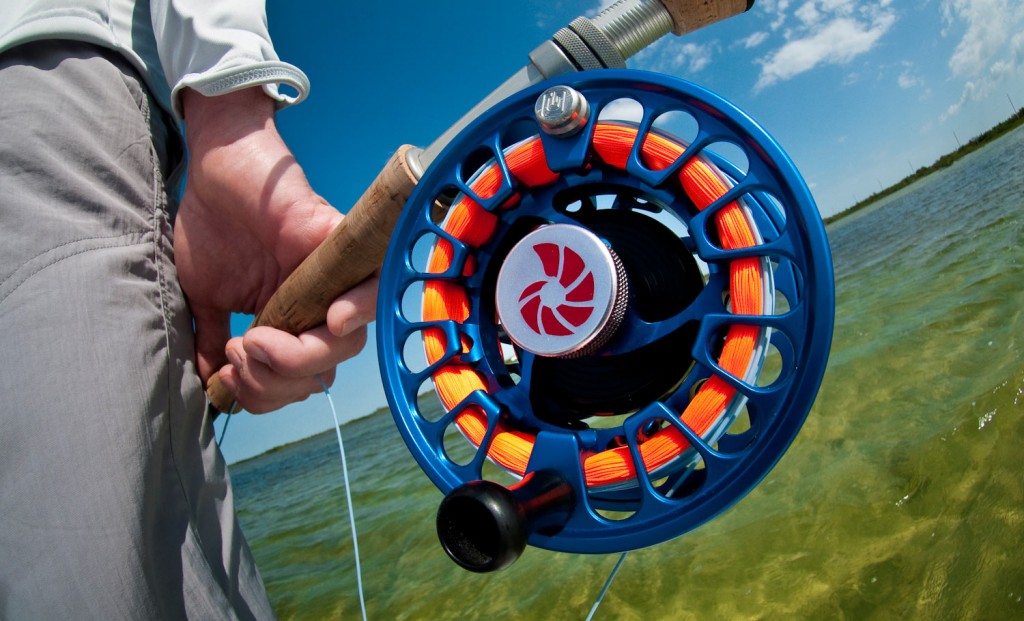
Best of all it only cost $285
I remember standing on the beach at Andros South watching my buddy Bruce Chard teaching his annual bonefish school. Bruce was illustrating for a first timer what he should expect when he encountered a bonefish. He held the line and let the student feel how hard he should strip set, then he took off running down the beach a fast as he could. The student did a good job of clearing the line and getting Bruce on the reel but I’ll never forget the look on his face when Bruce turned and ran straight back toward him. He stood slack jawed, line piled up at his feet while Bruce and I laughed.
That’s exactly what a bonefish will do to you. They can swim thirty miles per hour and at some point, as they go ballistic and criss cross the flat they’ll head straight for you. You had better be ready to pick up some line in a hurry. The first time it happened to me I struggled. My reel wouldn’t pick up the line and I resorted to stripping it in by hand. My guide told me to, “get rid of that trout reel.” Of course, it wasn’t a trout reel but it clearly wasn’t a bonefish reel either.
The next time I went bonefishing I had to be better prepared. I knew I needed a reel with a really large arbor but didn’t relish the idea of dropping the cash on another new bonefish reel. Fortunately there was another solution. I had a Nautilus NV Ten-Eleven, a great salt water reel. I bought the Nautilus G-8 spool for it. The G stands for Giga. This spool turned my Ten-Eleven into a super large arbor eight.
It’s a brilliant product. The spool is fast and easy to change and really gives the reel some power to pick up line with it’s 4.25″ arbor. It’s highly vented so the line dries quickly, which cuts way down on the chance that you spool will corrode from holding wet line. It’s light (7.2 oz) and holds 225 yards of 30 lb backing with an eight weight line. It lets me take
Read More »Scientific Anglers Amplitude Bonefish Line: Review
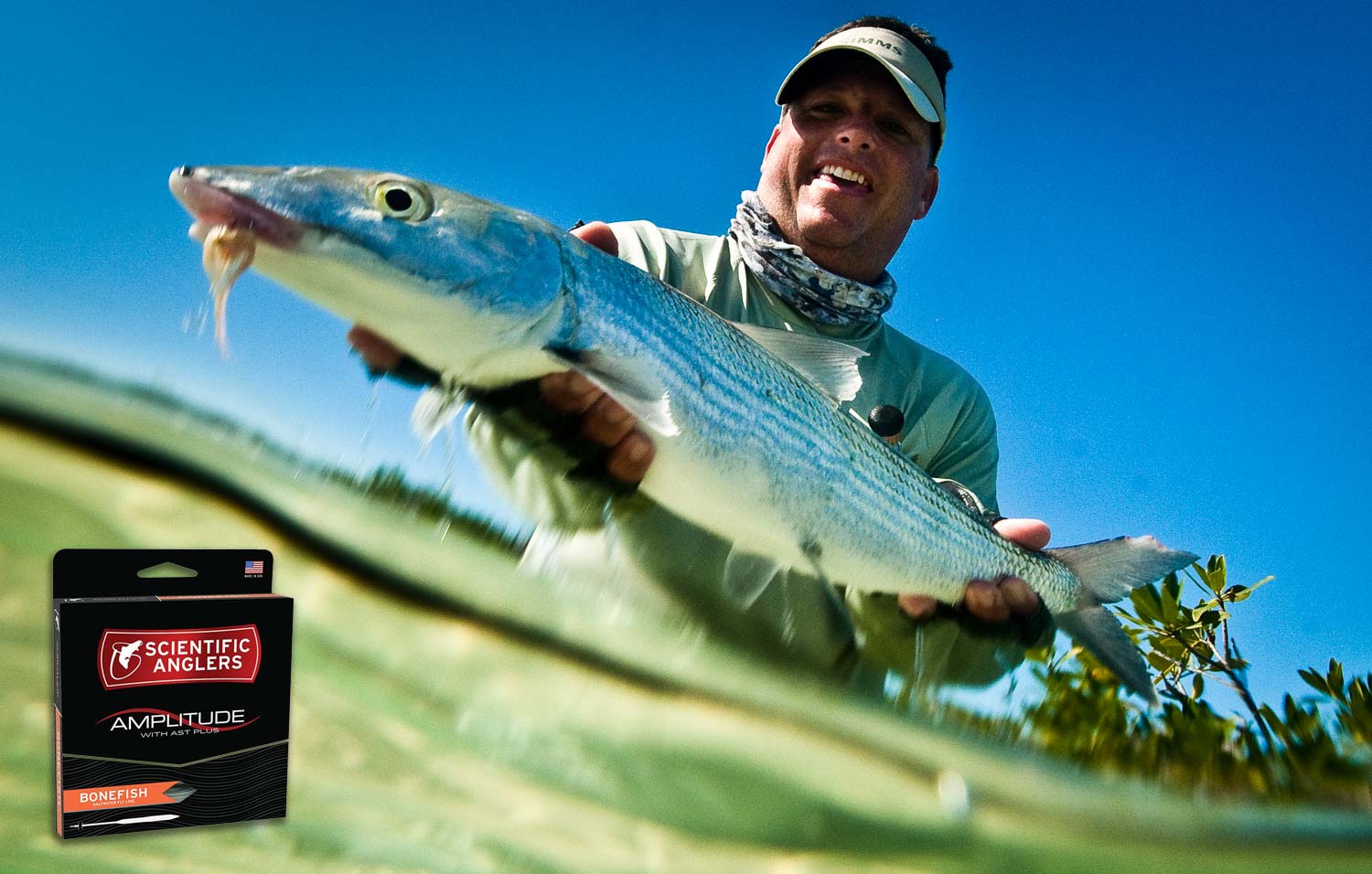
By John Byron
Looking for the perfect bonefish line? Good luck. Ain’t no such thing. But a really good line for bonefish, those are out there in growing numbers.
With COVID kicking trips into next year and restricted access to the flats, the driven bonefish chaser then turns to gear. I did. In good shape on rods and reels, I set out to find the best flyline for my eight-weight.
I’ve found one I really like, Scientific Anglers Amplitude Bonefish with AST-Plus.
I have been fishing Rio lines and good they are.
Early days I fished the Bonefish Quickshooter — one weight heavy out of the box and with a short, compact head, it’s ideal for the beginner to fight the wind and learn the short shots. Caught a lot of bonefish with the Quickshooter and it’s still my choice for big winds.
I then moved up (as I saw it) to a Rio DirectCore Flats Pro with the six-foot Stealth Tip. A bit overweight and front-end loaded like the Quickshooter but not as much. Caught a bunch of bonefish with that line too. But … both these excellent lines are a bit splashy when they hit the water, not the perfect presentation.
So I then moved on to the Rio DirectCore Bonefish line and I really like it. Haven’t fished it on the flats yet, but did spend a ton of time practice casting as I describe below. Verdict? It is a splendid line. Lays out nicely and I’d be happy using it in all but heavy wind.
But then my new penpal Ákos Szmutni in Hungary (he’s building a Stickman T7 for me) suggested I try other lines, including one from Scientific Anglers. I looked at the SA profiles and though I didn’t order the specific one Ákos recommended, I did find one that looked even better. It’s the line that’s subject of this review and I think it’s super. Thank you Ákos.
My test runs were not those fancy shootouts with expert casters measuring all of a line’s esoteric dimensions under perfect conditions. No, I just went out on my dock and tried these lines over and over until I felt I knew what I had.
VERDICT? OF THE LINES NOTED ABOVE, I LIKE SA’S AMPLITUDE BONEFISH BEST. BY A LOT.
Venue: small dock on an east-west canal off the Banana River, open water for about seventy feet to my neighbor’s dock.
Rod: Scott Sector eight-weight.
Leader: twelve-foot with typical weighted bonefish fly.
Casting: right-hand caster, to the east into the wind.
Wind: sometimes flat calm, sometimes into the coastal sea breeze maybe 15/20 MPH wind (gets much higher, I’d use my nine-weight with faithful old Rio Quickshooter line).
FIVE THINGS ABOUT THE SA AMPLITUDE BONEFISH STAND OUT AGAINST THE OTHERS:
Fishing Buddy
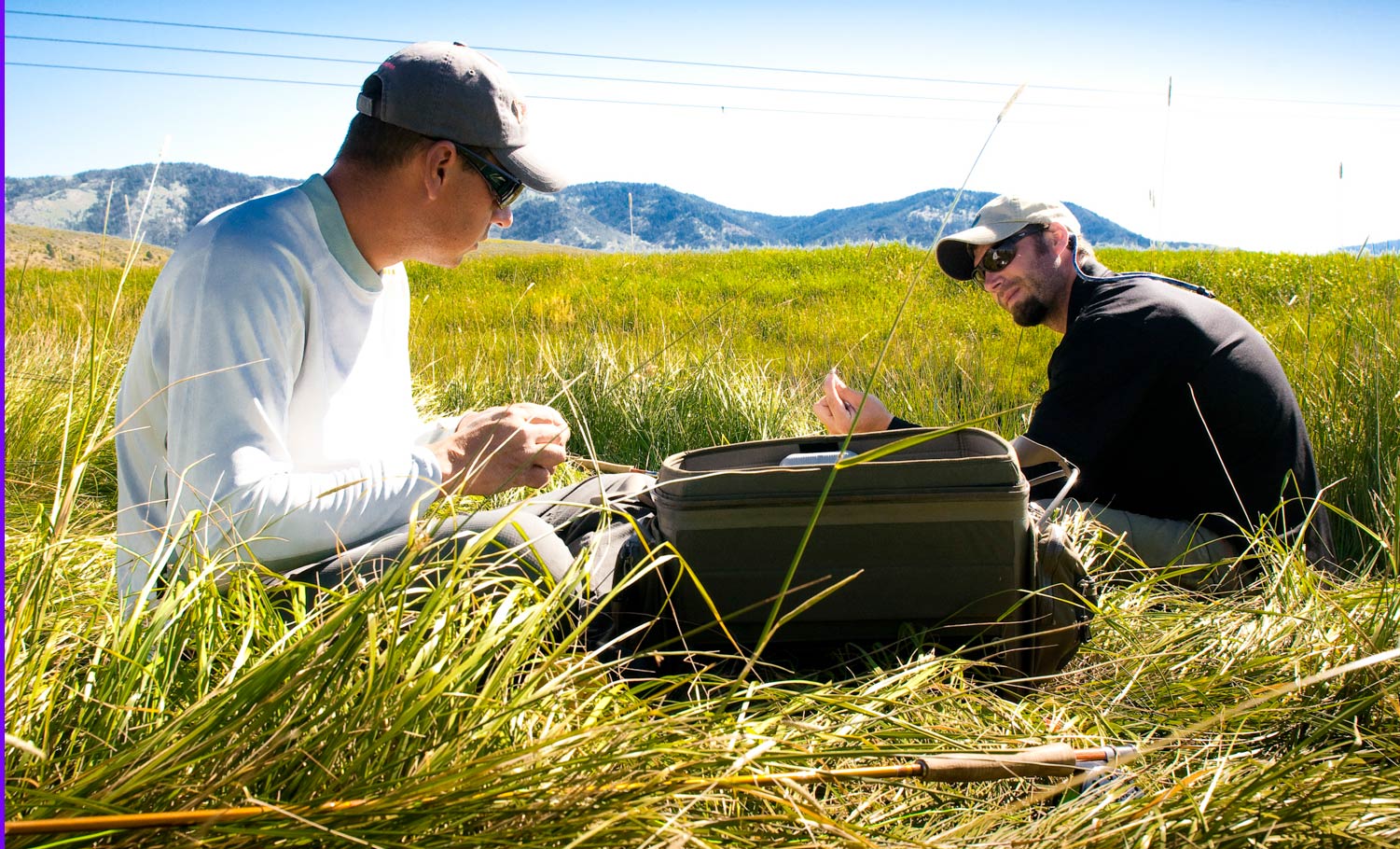
IN MY YEARS OF FLY FISHING I HAVE FISHED WITH MANY DIFFERENT PEOPLE.
I’m sure that many of you, like me, have a small group of 2 maybe 3 “fishing buddies.” Guys we can run with at a moment’s notice. Guys who, when we get to the water, need no words spoken as to who starts at what spot. No jealousy or fish envy. No competition other than being out and netting as a team. If one guy is hot, the other gives in to the better looking water until things “even out”. Sometimes one would even sit and simply watch the other fish a run, encouraging him.
“Nice, good drift, that’s the spot, he’s gotta be there, let that bug hunt, there he is!”
I live in the west, wedged between Montana and Washington in that little sliver of Idaho. I’m a sales engineer for a big company and about 14 years ago I got a new regional manager, Tom who was a sportsman, fishing and hunting, but never fly fishing. He was raised in Northern Illinois and Michigan and was now in Southern California. While traveling, we would got to know each other, as is natural, and I regaled him with stories about the rivers and places I would fish.
Being both outdoorsman we made a strong connection. One day he said, “I’m coming up to work in your area and I want you to take me to one of your spots.” So I did. It was late in the summer and the water was down but I wanted to take him to a beautiful place for living the moment and not just the fishing. A wonderful spot with a wall on one side and semi open flat behind to make back casting easier. We were on the inside bend and it was perfect for a first timer.
It was hot and we didn’t really catch much other than a few little fellas, but he had been afflicted. Some of us are very susceptible to certain diseases and we called fly fishing “The Disease” and we both joyously relished the affliction.
Our range extended from
Restore an Old Bamboo Fly Rod #1: Video Series
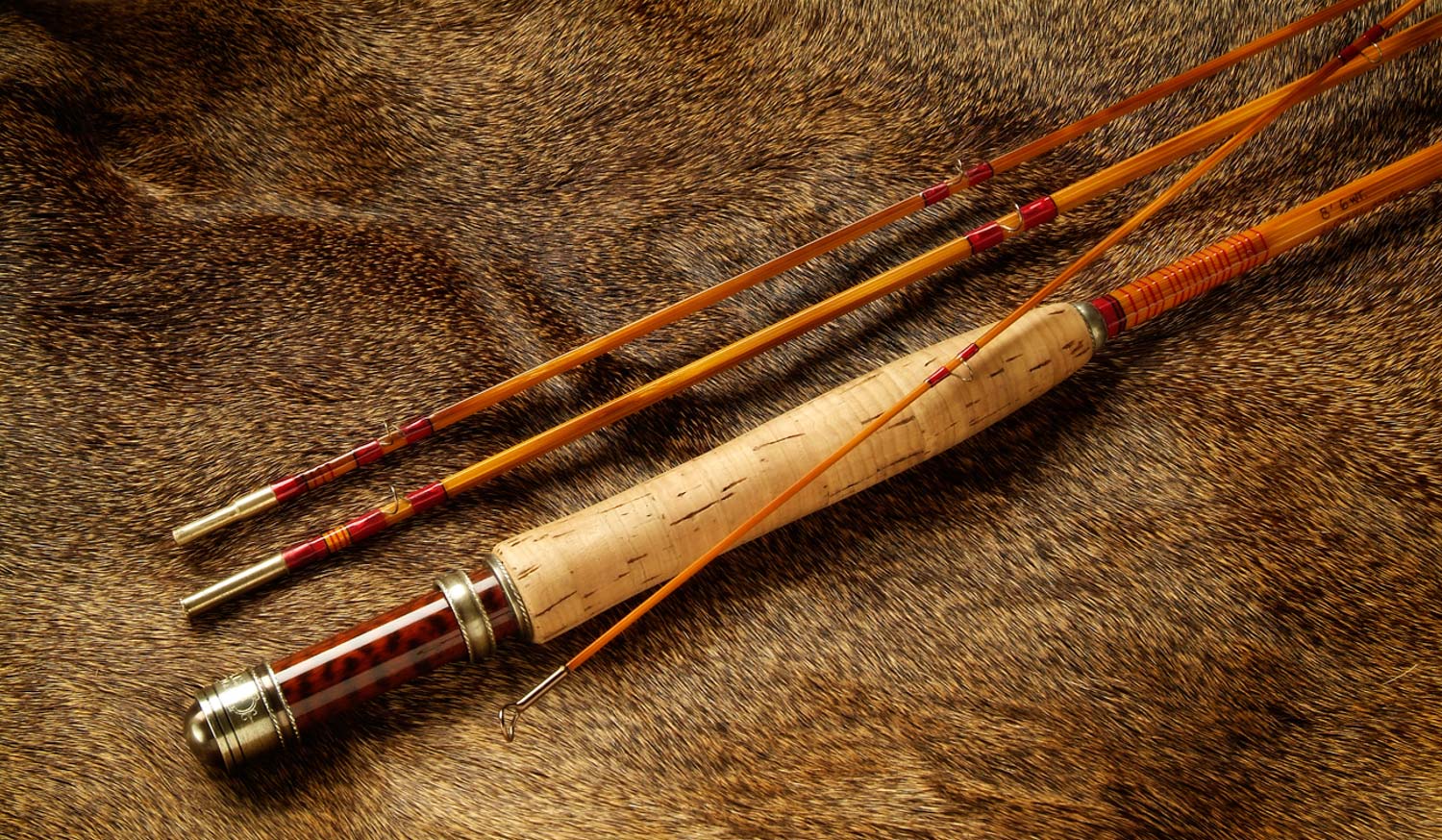
Today is the first in a series of videos, featuring Matt Draft of Proof Fly Fishing, on restoring old bamboo fly rods.
Have you been wanting a classic bamboo fly rod but suffering from sticker shock? Well, our buddy Matt Draft is back to solve that problem. Old bamboo fly rods are pretty easy to come by at yard sales, antique stores, and junk shops. A lot of times, these are great old rods. Maybe not collectors pieces but solid, great casting rods that started their lives on the shelf of the local hardware store and provided some fishy old dude years of enjoyment. More often than not though, these bargain rods are not in fishable condition, or at least not pretty. That’s ok. These rods were hand made and with a little knowledge and a little work they can be beautiful again.
IN THIS VIDEO MATT WILL GO OVER WHAT TO LOOK FOR IN A BAMBOO ROD FOR RESTORATION. HE’LL TELL YOU WHAT MATTERS, WHAT DOESN’T AND WHAT’S A DEAL BREAKER.
Read More »Help Andrew Grillos In A time of Tragedy
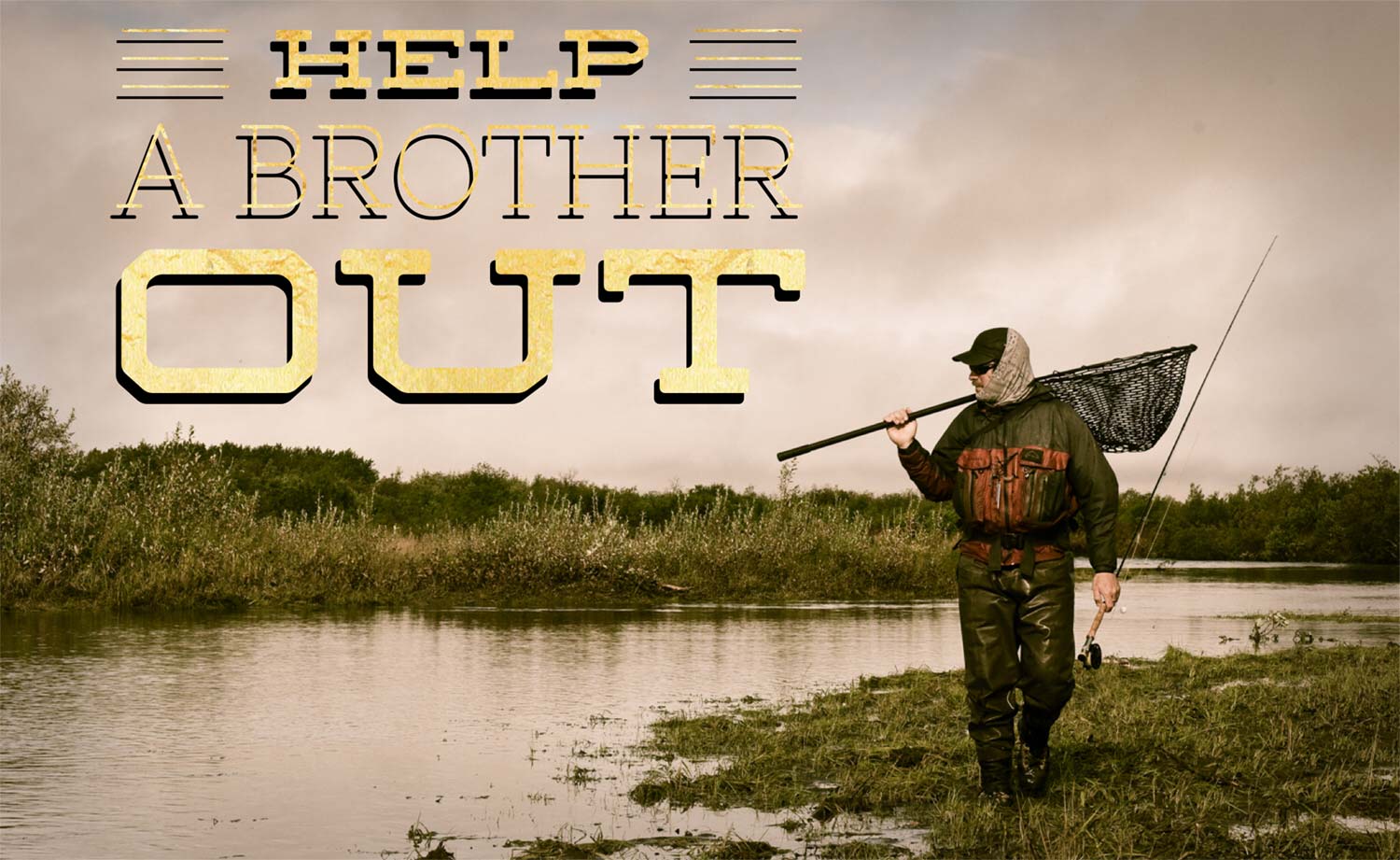
By Louis Cahill
Andrew Grillos is an innovative fly tyer, guide and one of the finest people you’ll ever meet, and he needs our help.
You may know Andrew for his killer fly patterns like the Hippy Stomper or Bob Gnarly. You may have seen his contributions here on G&G, or fished with him for trout in Alaska. You may not know him at all, but I assure you, if you fly fish, Andrew has touched your life in some way. In addition to being one of our sports great innovators, he is one of the kindest people I have known.
Last week Andrew was struck down by a sever stroke. In spite of being young and incredibly fit (Andrew is an ultra-marathon runner) within moments he found himself fighting for his life. After multiple surgeries, he is know hospitalized and only partially responsive. Still in grave danger but doctors site his physical strength and will to survive as great assets. I wish I had more detailed information to share, but things are changing quickly and, honestly, the family has plenty to do without me bugging them for updates.
HOW YOU CAN HELP.
This is the kind of event that could strike any of us. If you are concerned and would like to help out, it will be greatly appreciated and there are a couple of ways you can choose to do so.
Go Fund Me
There is a Go Fund Me page where you can donate to help cover the mounting medical expenses. Click here to donate.
Auctions
Friends are auctioning off fly fishing gear and trips to benefit the cause on Instagram. You can find the auctions by searching the hashtag #fliesforandrew on Instagram.
I would like to personally thank everyone who chooses to help. All of us who know Andrew are heartbroken by these events. Please help if you can.
Read More »Stealth on Small Streams
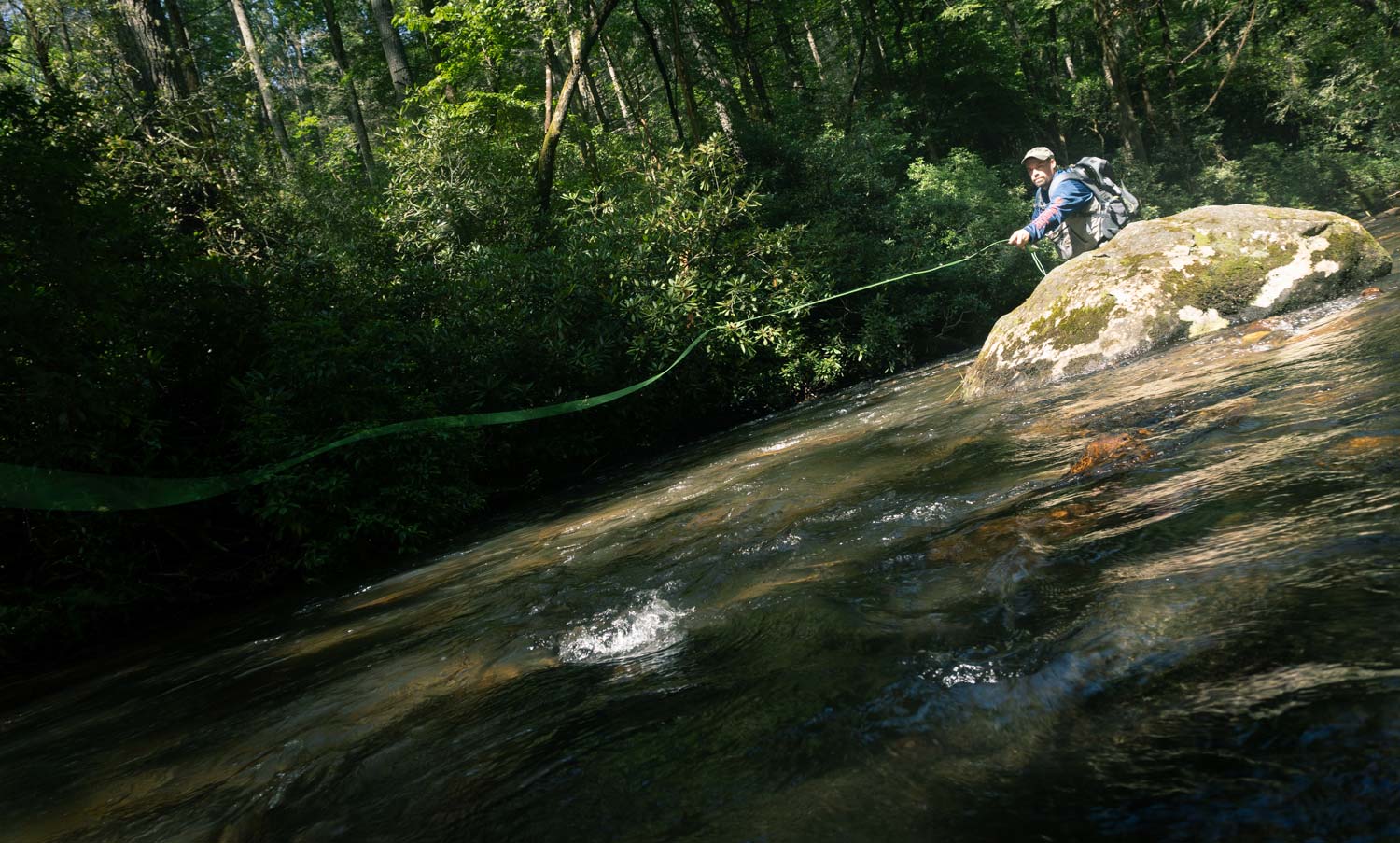
By Jason Tucker
ALEX WADED INTO THE POOL, PUSHING A BOW WAVE AHEAD OF HIM THAT LAPPED AGAINST THE GRASS ON THE FAR BANK- NOT THAT FAR, AS HE COULD ALMOST REACH IT WITH THE TIP OF HIS ROD.
What is he doing? I thought. He’s going to put down every fish in the bend and pool. I would have pushed through the tag alders over the shallow sand so as to stay out of the pool. Yet there Alex stands, waist deep in water, almost on top of where he needs to cast. A few feet downstream, near where he had just walked, a good fish rose, and I fought the urge to flip my fly out there, leaving the first cast to Alex.
Alex made a single cast, and his fly disappeared with a loud slap. He set the hook and chaos ensued as his line rooster tailed through the water. The fish turned and swam back up to Alex, then ran back downstream, streaking past my leg on the surface- the biggest brook trout I’ve ever seen outside of Canada. It was easily four pounds and probably five. Big and thick and over twenty inches long. Then it turned and dogged its way upstream, and the leader parted for no apparent reason. It wasn’t even under that much pressure at the moment. We all stared in disbelief at the dangling end of his line.
I don’t know why Alex’ approach that night resulted in hooking up on his best brook trout ever (if you count fish not landed). My best guess is that it was late evening and the fish, anticipating the evening hatch, had moved out to feed, and the dropping light gave them confidence. Normally I would have thought he had buggered the entire hole, but that night his approach resulted in a hookup and one of the most bittersweet memories in our time fishing together. Alex still can’t talk about it.
Alex is a cautious fisherman. He wears camo when he fishes for brook trout and is generally very cautious. I don’t wear camo, but it’s not a bad idea. Small streams, being small require an extra level of stealth. Here are some things you can do to increase your success on small streams.
ELEMENTS OF STEALTH
Clothing- camo, dull colors, sky blue
Stealth on any stream starts at home with your clothing. Leave the bright colors at home. The dull colors most waders come in is a good place to start. Don’t hesitate to wear your hunting camo. Dull shades of green, brown and grey will work best. I personally don’t care for black- I think it offers too much contrast. Because the fish are looking up I think sky or pale blue is not a bad choice, especially as part of a camo pattern. On a small stream you are fishing in tight quarters, sometimes almost on top of the fish, and you want to blend with the background as much as possible.
Observation- slow down!
I can’t tell you the number of times I still plow into a stream only to realize I have bumped a good fish. I personally do not like fishing close to the access, and at times don’t even care that I’m bumping fish on my way to where I really want to fish. But when I get to there, it really hurts to step into the stream only to realize I’ve blown up the spot by not being more observant. I’m looking both for fish and also what they may be feeding on. Often we know to some degree what’s going on- you’re fishing a specific hatch, or it’s midsummer and you’re fishing terrestrials. Maybe the weather is cool and
Read More »Strategies For DIY Bonefishing

By Rod Hamilton
I RECEIVE EMAILS EVERY DAY FROM ANGLERS LOOKING FOR ADVICE ON HOW TO CATCH BONEFISH ON THOSE DAYS WHEN THEY ARE NOT WITH A GUIDE.
The email usually goes something like this: “I do fine when I’m guided, but can’t seem to either find fish or get them to eat when I am on my own.”
“What am I doing wrong?”
DIY-6I’ve been bonefishing for twenty years and like most of us, spent the first five years fishing exclusively with guides. I thought I was getting pretty good and put my bonefish I.Q. at around 120. So, I tried it on my own, only to find out that it was actually my guide who was smart and my bonefish I.Q. was more like 35.
So game on, challenge accepted, and I have spent the last fifteen years learning everything I could about how to DIY for bonefish.
DIY-1There is a lot to learn to be successful on your own. After all, now you have to know where the fish are, how they react to tides, what they eat, see them before they see you and make a presentation that won’t send them into deep water. There is no boat to run you out three miles, instead a car, bicycle or kayak is your chariot to the flats.
Nothing replaces time on the water and most of the early lessons are going to result in fishless days, but let me see if I can ease the pain and help shorten the learning curve with some basic strategies for the DIY fisherman.
1. Learn to use Google Earth
Instead of spending those hours at home dreaming about your upcoming trip, spend that time scouring satellite images to find places others might not easily discover. The hardest bonefish in the world to catch are those that have been trained by the few hundred anglers before you.
2. The DIY Fly Box is different then the Guide Fly Box.
Read More »Small Wonder, Middle Georgia’s Shoal Bass
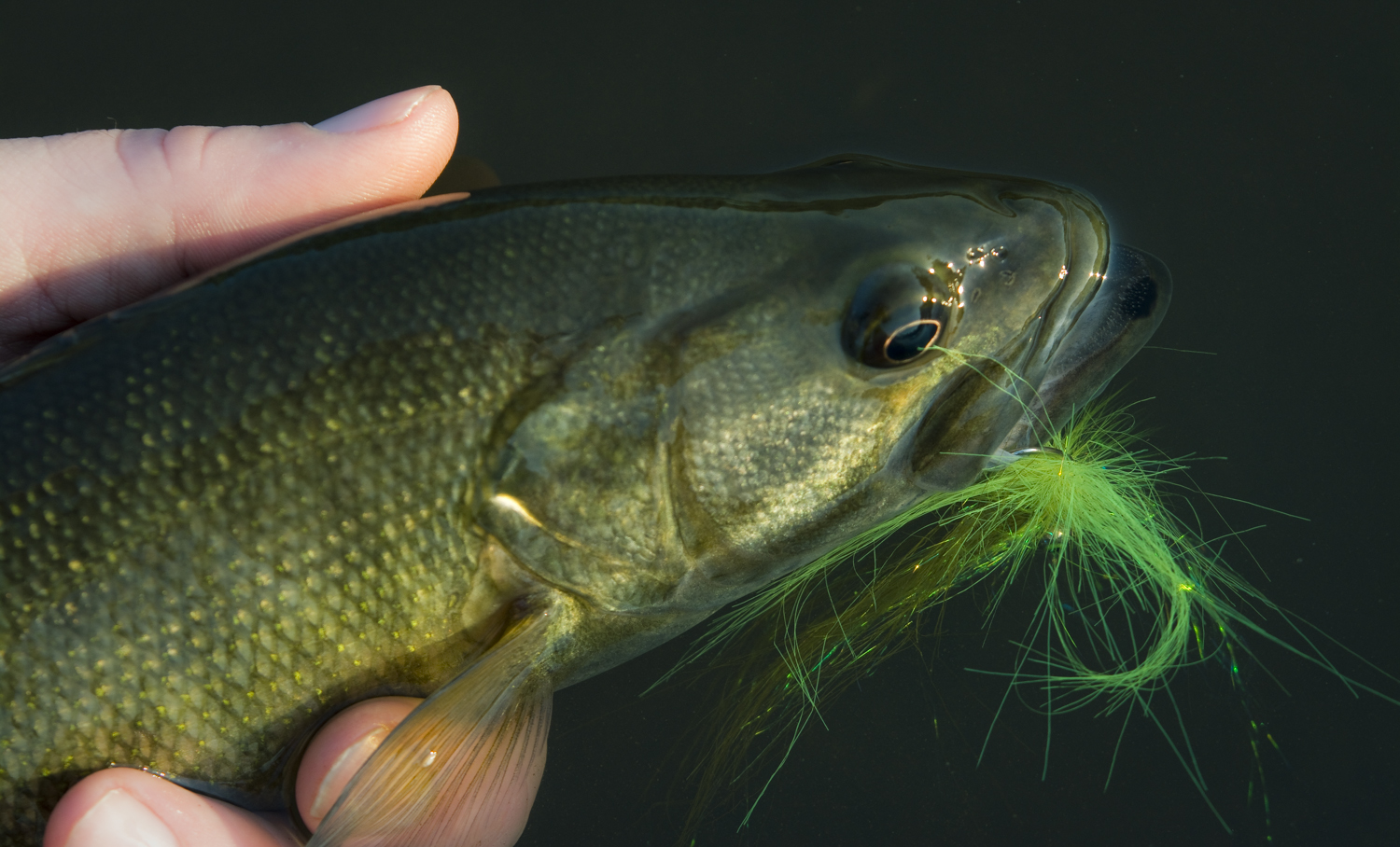
By Justin Pickett
THE SETTING SUN IS WARM AT MY BACK AS I STAND AT THE REAR OF MY JEEP.
I slip on my guard socks and wrench down on my boots until I’m happy with the fit. No need for waders today. The deep south humidity is smothering as I place my Buff around my neck. I dig through the mess that is my gear bag, and pull out my reel and place it on my six weight rod. I’m anxious as I slip the fly line through the guides, but I know that haste often does not lead to happiness. “Slow it down, take your time,” I remind myself.
I peer into my fly box, looking at all of its different inhabitants. Flies I’ve either bought, tied, found, or that have been gifted to me. The colors, the variety of materials. The unique purpose each pattern serves. There are several flies that have not so much as kissed the water, and a select few that have some serious frequent flyer miles. I don’t know why I stare for so long. It’s almost comical. I knew what fly I was going to fish with before I left the house.
I smirk and shake my head as I grab and inspect my go-to fly. It’s a simple fly, but a deadly one. It is a variant of an old, tried and true pattern. The materials reside around a size #4 streamer hook and are dark olive in color. The free flowing, marabou tail has just a bit of flash added to aide in piquing the interest of the fish that I seek. The body is wound with hackled feathers, and within the body are several rubbery legs, protruding from each side just before the nickel conehead. Ah, that’s where the life of this fly exists. The long, webby schlappen and the speckled tentacles breathes this fly to life. It is not prey. It is a seeker, and find, it does. My quarry just can’t seem to resist it once it is swung through their space. Add a little dash of confidence and a pinch of mojo, and how could one go wrong?
As I look over the bridge I can see fish rising, splashing at the surface each time they take a mayfly that has perilously drifted into their feeding lanes. Topwater isn’t my game plan though. The river is running at the perfect flow, just a touch high, and that’s just how I like it. I know this is going to be a great evening. The “magic hour” is approaching as I cinch down on my loop knot and hang my fly on the hook keeper. I set my drag. I grab my sling pack and clip my hemostats to the shoulder strap. I check again to make sure that I have my fly box and the few tippet spools that I need.
For those that fish within its banks, this location is endearingly known as “The Promised Land.” It is a
Read More »What Cataracts Have Taught Me About Seeing Fish
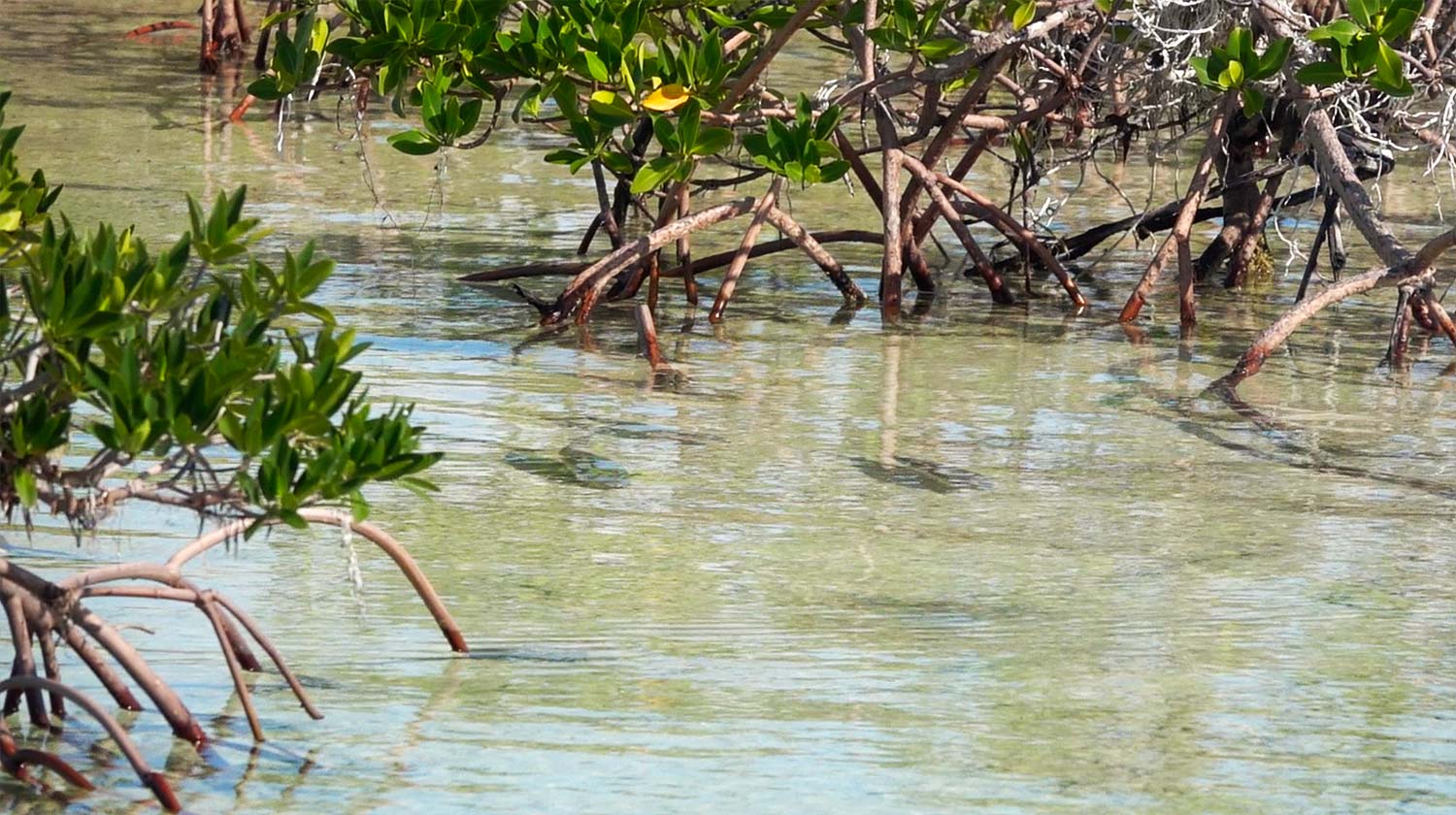
There’s more to spotting fish than having good eyes, so don’t assume you can’t see them.
I’m used to being told I have good eyes. Among anglers, that means the ability to spot fish. In truth, I have never had good eyes. I’ve worn glasses my whole life and had to remember where I put them at night because I couldn’t find my glasses, without my glasses. Thanks to the great prescription program at Smith Optics, I’ve always had good fishing glasses and could see well enough. It wasn’t until I developed aggressive cataracts, last year, that I really started to struggle.
It’s no secret that I do a lot of bonefishing. They don’t call bonefish the ghosts of the flats for no reason. Their natural camouflage makes them very difficult to see. When I started losing my sight, my greatest fear was that I would no longer be able to spot bonefish. This fear only got worse in the weeks following my first lens replacement surgery. My vision was pretty poor at first and even now, a month past my second surgery, it isn’t what I’d like. I’m confident that it will get to where I want it, but when I headed to Abaco for bonefish, I was pretty nervous about how I would perform.
It turns out I did pretty good. It was a huge relief to see my first bonefish, and even better to hear, “good eyes,” when I spotted a fish before my guide. Still, my new eyes are not what they should be and it taught me a few things about what it means to see fish. I see plenty of anglers give up on the idea that they will be able to see fish before they cast to them. If that sounds familiar, here are a few things to think about when you’re looking for fish.
You can actually find fish with surprisingly poor visual acuity.
Read More »